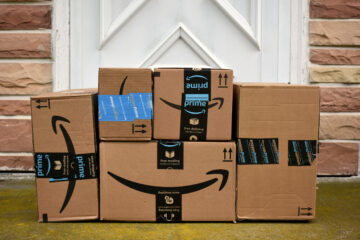Have you ever placed an order on Walmart or Amazon and expected it to show up that same day? Not hoped — expected.
That’s the new reality for a growing number of U.S. shoppers. The pandemic accelerated our dependence on e-commerce and transformed what we demand and when.
Fast delivery is no longer a perk. These days it’s the baseline.
And Amazon, long seen as the logistics leader, is now evolving its entire network to meet this new benchmark.
Related: Amazon’s latest big bet may flop
The transformation is most visible in the West, where Amazon is reshaping its fulfillment center footprint. The company is focusing less on bulk shipping and more on solving the most expensive problem in logistics: the last mile, referring to the final leg of a package’s journey, from the warehouse to the customer’s doorstep.
The last stretch is often called the “last-mile problem” because whether the package has come from China, Chattanooga, or Charlotte, it often accounts for over 50% of delivery costs.
Amazon is looking for ways to solve the so-called last-mile problem, referring to the point at which a package leaves a warehouse to begin the final leg of its journey.
Image source: Shutterstock
Amazon warehouse will shut down
Over the past two decades, the Western U.S. has become a logistical hub for Amazon. Locations like Reno, Las Vegas, and Phoenix offer proximity to major highways, access to large portions of the Western U.S. population, somewhat lower land costs, and business-friendly policies.
It all adds up to ideal conditions for the kinds of massive fulfillment centers that can accommodate two- to three-day shipping cycles.
The western warehouses were strategically placed decades ago to avoid sales tax liabilities and to support booming metro markets like Los Angeles, the San Francisco Bay Area, and Seattle. But those older “big-box” facilities, built for scale, now face a challenge: they’re not fast or local enough.
Today’s logistics strategy demands inventory kept closer to customers— not just in large central warehouses, but in smaller, nimble hubs inside or near cities.
Amazon’s top competitor in e-commerce, Walmart (WMT) , has a brick-and-mortar location within 10 miles of 90% of Americans. Walmart can use stores as fulfillment centers, quickly filling online orders for curbside pickup or delivery.
Related: FedEx layoffs signal a concerning business trend
Amazon (AMZN) is attacking its own last-mile bottleneck by redesigning facilities to better accommodate same-day delivery expectations.
And it’s why Amazon recently announced it will shutter its long-running Reno, Nevada, fulfillment center on August 2, 2025. The closure affects roughly 325 workers, most of whom have been offered transfers or severance packages.
Amazon says the move isn’t a pullback but a pivot. A new facility focused on same-day delivery is already under construction nearby and is expected to open in 2026.
The site that will close was built more than a decade ago for bulk shipments and long-haul logistics. The new facility will be faster, leaner, and closer to population centers. In other words, it will be optimized for Amazon’s evolving promise of sub-24-hour delivery.
Amazon wants to solve the last-mile problem
By positioning inventory closer to customers, Amazon will be able to shorten delivery distances, cut fuel usage, and speed up fulfillment.
It’s why Amazon has expanded “local fulfillment centers” to support same-day delivery in 140 U.S. metro areas. With some items, customers can get sub-one-hour delivery for a $2.99 fee if minimum purchase levels aren’t met. Speed has become non-negotiable. And solving the last-mile problem is how Amazon delivers on that promise.
Surveys show 72% of consumers prefer retailers offering same-day delivery, and nearly half are willing to pay more for it, according to Chain Store Age. Nearly 40% now expect packages within 24 hours — or faster. Another 25% are willing to pay for delivery if it comes within a 1- to 2-hour window, according to PwC Global Insights.
Related: USPS makes change to rival Amazon consumer will appreciate
The closure of Amazon’s Reno warehouse underscores a broader trend: traditional fulfillment centers are giving way to hubs designed for that last mile.
This evolution is unfolding as the logistics industry faces massive disruption. UPS and FedEx have raised surcharges and revised zone maps, pushing more costs onto shippers and consumers.
As shipping and logistics companies scramble to meet consumers’ expectations around delivery, consumers might start to notice higher free-shipping thresholds and more incentives to pick up their orders from stores or at hubs, such as the lockers Amazon has installed at Whole Foods locations.
The Reno warehouse closure and Amazon’s decision to replace the “aging” warehouse structure with a last-mile-optimized facility reflect the future of retail: fast, local, and efficient.
Same-day delivery is the new normal, and Amazon will try to stay ahead by solving the last-mile challenge.
Related: Major logistics and trucking company files Chapter 11 bankruptcy


